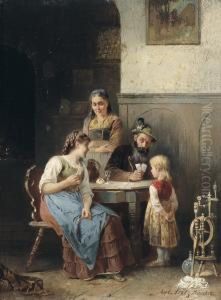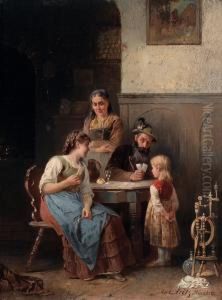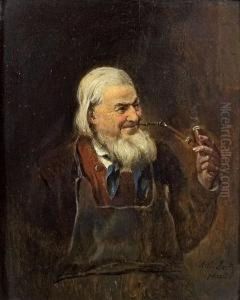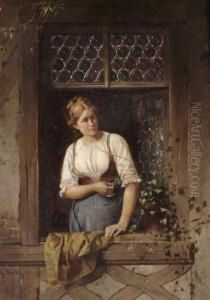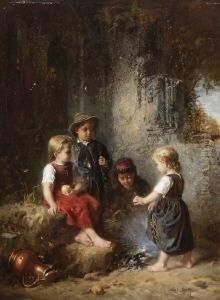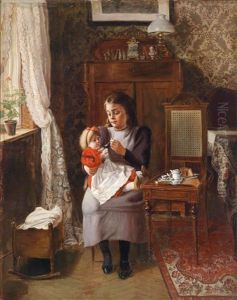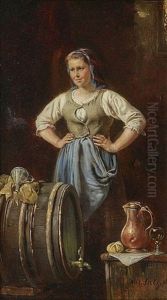Anton Seitz Paintings
Anton Seitz was a German painter born in 1829 in Roth, near Nuremberg, Bavaria. He was renowned for his detailed genre paintings, capturing scenes of everyday life with a particular focus on the lives of peasants and rural communities. Seitz's work is characterized by its narrative quality, often telling stories through the expressions and activities of his subjects, and by his meticulous attention to detail, especially in the depiction of costumes and interior settings.
Seitz received his early education in art at the Nuremberg Academy, where he was influenced by the Biedermeier style, a style that emphasized simplicity and modesty in reaction to the excesses of the late Baroque period. He furthered his studies in Munich, a city that was, at the time, a vibrant center for art and culture in Germany. Munich's artistic community and the city's rich cultural life had a profound impact on Seitz's development as an artist.
Throughout his career, Anton Seitz exhibited a keen interest in the social conditions of his time. His works often reflect a compassionate view of his subjects, imbued with a sense of dignity and respect for the peasantry and their way of life. This empathy, combined with his technical skill, earned him considerable acclaim during his lifetime. Seitz's paintings were sought after by collectors and exhibited in numerous galleries across Europe.
Despite his success, Seitz remained deeply attached to his Bavarian roots, and his works continue to be celebrated for their portrayal of Bavarian and rural German life. He passed away in 1900, leaving behind a legacy that has continued to intrigue and inspire art historians and collectors alike. Seitz's paintings are held in several prestigious collections and museums, testament to the enduring appeal and significance of his contributions to the genre of painting.





